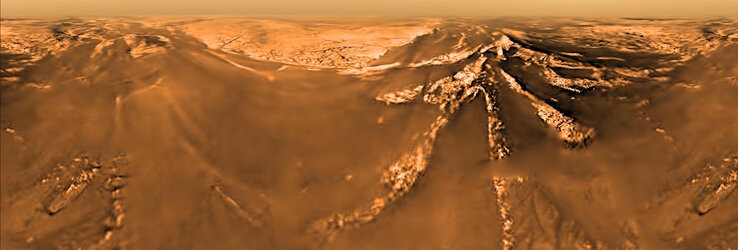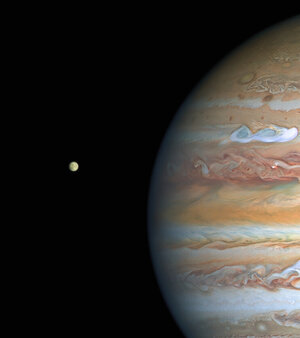

Understanding the Solar System
Our Solar System formed about 4.6 billion years ago. Since then, its many planets and moons have evolved in a myriad of different ways. To understand how the Solar System works and why Earth is unique, ESA has developed a series of ambitious science missions:
In 2005, the Huygens probe landed on Titan, the largest moon of Saturn, revealing an extraordinary icy landscape shaped by rain, rivers, and lakes of liquid hydrocarbons.
Mars Express has demonstrated that liquid water once flowed on the Red Planet, altering its geology. It has also found methane in its atmosphere, perhaps a sign of life beneath its surface.
ExoMars will continue this exploration of Mars, measuring trace gases in the atmosphere in more detail, and searching directly for signs of life on and below the ground.
Venus Express is peering into the hot, dense Venusian atmosphere to study the dramatic impact the greenhouse effect has had there and the possibility that volcanoes may still be active on the planet.
Rosetta is on its way to rendezvous with Comet 67P/Churyumov-Gerasimenko in 2014 to help understand the properties of these primordial bodies, and whether they brought water to Earth.
The joint BepiColombo mission with Japan will explore Mercury, the closest planet to the Sun, to learn how planets form and evolve in close proximity to stars.
Solar Orbiter, will explore the Sun and its heliosphere, a huge bubble in space created by the solar wind. It will sample particles in the wind shortly after it is ejected from the Sun’s surface to improve our understanding of space weather and its effects on Earth.
JUICE will travel to Jupiter to study the giant planet and its large, icy moons. It will remotely probe the water oceans thought to exist beneath their icy crusts, to identify potentially habitable niches where life may have evolved in the outer Solar System.





